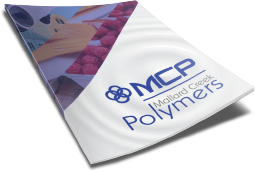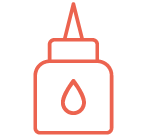Emulsion Polymers for Automotive and Transportation Coatings
With problem-detecting sensors, wireless connections, cloud-based security and real-time navigation, it’s easy to think that the high-tech features in today’s hot rides are all electronic. That, however, would be overlooking some of the most..
With problem-detecting sensors, wireless connections, cloud-based security and real-time navigation, it’s easy to think that the high-tech features in today’s hot rides are all electronic. That, however, would be overlooking some of the most remarkable technologies that are making cars safer, quieter, less expensive and more fuel efficient. Yes, digital technologies might dominate headlines, but behind the scenes, industrial chemists are making the good life possible through innovations in paints, coatings, sealants and textiles.
It’s important to know because these products significantly improve the performance and life expectancy of new cars and trucks while giving drivers an experience that keeps them coming back for more. There are all types of polymers used in vehicle design, however this article focuses on water-based emulsion polymers which are latex products found in many forms throughout the automotive design. They are in places you can see and places you cannot. Emulsion polymers are a critical component in high-tech automotive manufacturing.
Automotive textile design is more than simply aesthetics
Aside from body style and engine performance, trim packages are what make the cars we love lovable. Stain-resistant carpets, custom floor mats and paneling are a big part of those trim packages. In fact, automotive textiles are a key part of the overall design of a vehicle and can be found not just in the cabin but throughout the vehicle. Some examples of automotive textiles are molded, nonwoven fabrics that provide an upscale finish in the trunk, hood liners that protect exterior paint and reduce noise, and stiffener panels that add strength and rigidity.
Ever wonder how carpets and upholstery can look new for so long – even after numerous spills of drinks and food? Thank chemists for the excellent water, oil and solvent resistance built into today’s automotive textiles. Many automotive textiles use high-tech coatings and binders formulated using styrene-butadiene and styrene-acrylic emulsion polymers to provide these performance characteristics.
The ability to customize polymer emulsions to a wide variety of applications is one of the attributes that make them so appealing to manufacturers. Hood liners, for example, are designed with high glass-transition-temperature (Tg) polymer emulsions to create a barrier for extremely hot temperatures coming off the engine block to protect the paint on the hood. The same type of high Tg polymers allow nonwoven fabrics to be custom formed to a trunk interior and retain the required shape to meet vehicle specifications set by the manufacturer.
A quieter ride with LASD
Hearing the ocean while at the beach is relaxing. Hearing the ocean every time you take a trip in your car is annoying, particularly if you live in Nebraska or some other landlocked state. Automobile manufacturers want your driving experience to be as relaxing as a day at the surf, so reducing cabin noise is a challenge that automotive designers take seriously. In addition to tire noise, metal parts constantly moving around can create all types of clicks, clangs, squeaks and crunches that are noisy joy-killers. The noise-making vibrations that transfer to the cabin as a car zips down the highway are a big nuisance to a driver listening to an audiobook or child trying to sleep in the backseat.
During the assembly of the vehicle, manufacturers fit a variety of vibration-damping or sound-absorbing materials to reduce the noise from vibrations. Historically, the choice of such material has been between foam and bitumen pads. An alternative option to reduce vibration is a liquid applied sound damping (LASD) coating which is formulated using water-based emulsion polymers. Not only is the application of LASD far easier than fitting bitumen pads, but by removing the weight of bitumen pads, manufacturers can significantly increase fuel economy.
Emulsion polymers used in LASD coatings are optimized for filler content, adhesion and flexibility. That they easily adhere to metal parts is another great benefit to manufacturers. Other advantages to using polymer emulsions include low cost application and greater consistency and repeatability of placement.
About those underbody coatings
About the only thing most people know about underbody coatings is that new car dealers like to charge extra for them. Whether you go with factory underbody coatings or additional underbody coatings applied by the dealer, these are important coatings formulated with emulsion polymers that provide corrosion and chemical resistance to the metal components underneath the vehicle. With the different seasons and driving conditions throughout the year, vehicles are exposed to many destructive elements such as salt sprayed on the road ahead of a winter storm or chemical fluids used to keep engines performing in tip-top shape. These elements and others can cause the underbody of the vehicle to corrode.
Styrene-butadiene polymer emulsions are used in the formulation of these coatings because of the ability to accept high filler loadings, the compatibility with corrosion inhibiting pigments, and the ability to meet the requirements of tough driving environments with a range of strength and flexibility.
Digital technology might have all the bells and whistles, but whether you are in a car, bus, train or plane, water-based emulsion polymers are all around you providing a better traveling experience. At Mallard Creek Polymers we work with our customers to develop specialty emulsion polymers to optimize their product designs. To learn more about what we can do to meet your needs for contact us today.

 Construction
Construction
 Nonwovens
Nonwovens
 Adhesives
Adhesives
 Textiles
Textiles
 Printing & Packaging
Printing & Packaging
 Paper
Paper
 Paints & Coatings
Paints & Coatings



